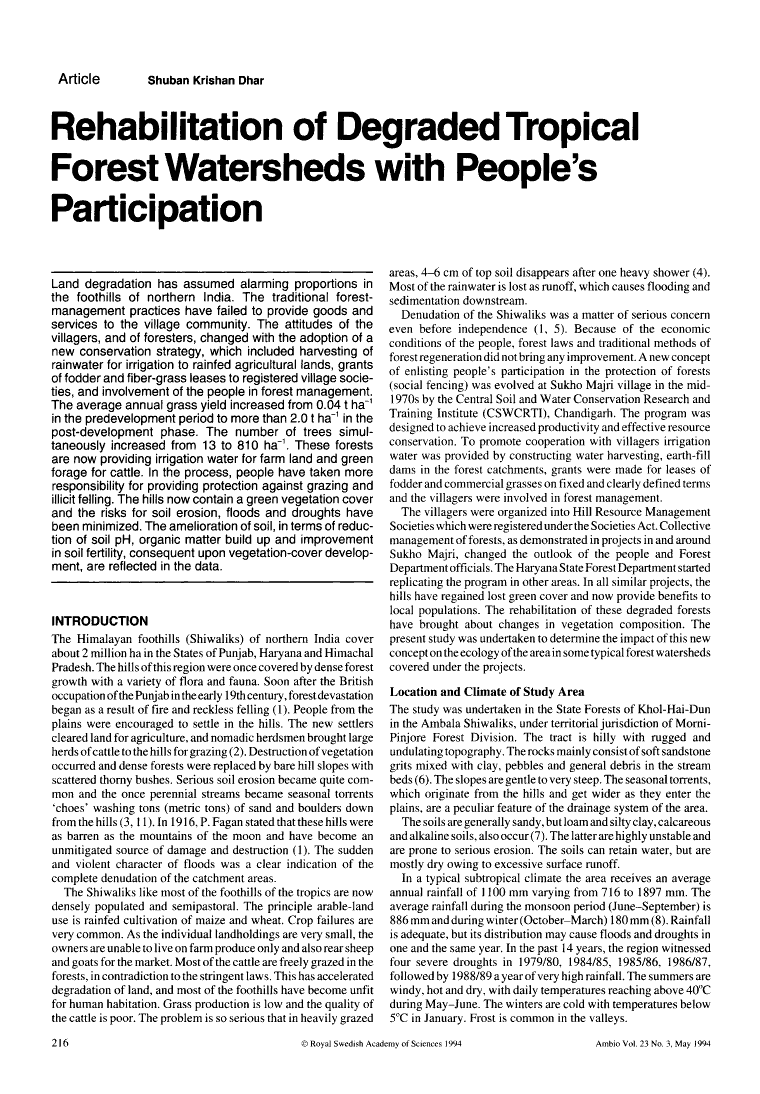
Land degradation has assumed alarming proportions in the foothills of northern India. The traditional forest-management practices have failed to provide goods and services to the village community. The attitudes of the villagers, and of foresters, changed with the adoption of a new conservation strategy, which included harvesting of rainwater for irrigation to rainfed agricultural lands, grants of fodder and fiber-grass leases to registered village societies, and involvement of the people in forest management. The average annual grass yield increased from 0.04 t ha-1 in the predevelopment period to more than 2.0 t ha-1 in the post-development phase. The number of trees simultaneously increased from 13 to 810 ha-1. These forests are now providing irrigation water for farm land and green forage for cattle. In the process, people have taken more responsibility for providing protection against grazing and illicit felling. The hills now contain a green vegetation cover and the risks for soil erosion, floods and droughts have been minimized. The amelioration of soil, in terms of reduction of soil pH, organic matter build up and improvement in soil fertility consequent upon vegetation-cover development, are reflected in the data.